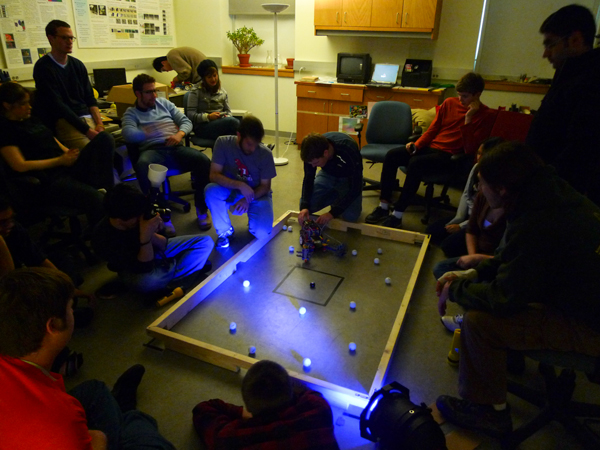
Initially, your robot will be placed in a random spot in the playing field. No human intervention will be allowed once the start button is pressed. The winner is the robot that accumulates the most points.

|
Design, build and program a robot capable of removing as many
ping-pong balls as possible from a playing field during a designated
time period. The playing field will be a rectangular arena, inspired
by a pool table, about 4' x 6' large, bounded by wooden boards
(2-by-4's), and containing 14 ping-pong balls in random locations.
There will be several holes ("pockets") along the perimeter, and the
object is to push the balls through these holes. However, to make it
more interesting, there will also be a designated black "8
ball", which may not be removed if any other balls are still present
in the playing field. Since it is rather difficult for a robot to
detect balls or their colors, this special 8 ball will be
placed in the middle of an
14" x 14" square delineated with black tape in the center of the
playing field, so that your robot can keep a safe distance. Points
are scored by "pocketing" the other balls. A bright
light will be mounted above one of the pockets, which will be worth
more points.
Initially, your robot will be placed in a random spot in the playing field. No human intervention will be allowed once the start button is pressed. The winner is the robot that accumulates the most points. |
The tentative scoring rules are as follows (these maybe refined over the next week):